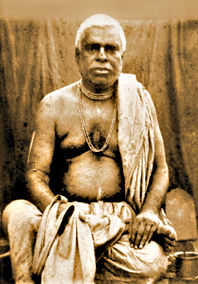
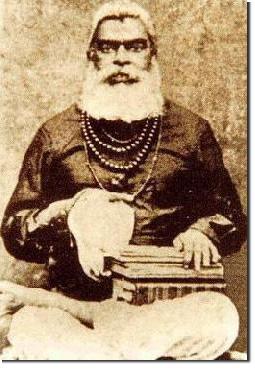
| Jaiva-dharma (The Universal Religion) | Sri Brahma Samhita |
| Sri Navadvipa Mahatmya | Sadhana |
| Pancha Samskara: The Process of Initiation | A Deliberation on the Methodology of Sadhu-sanga |
| Mahaprabhura Siksa: The Teachings of Chaitanya Mahaprabhu |
Apasampradayer Svarupa [The Smarta Doctrine] |
| From Moses to Mahaprabhu [From the introduction to the Sri Krsna Samhita] |
Sri Tattva-viveka [An Analysis of Western Philosophies] |
| Bhajana-rahasya [Revealing the Secrets of Bhajana] |
Sri Dasamula-Niryas [The Essence Of Ten Maxims] |
| Jiva Soul | Reason and Love |
| Pratistha Parivarjana | Priti (Love) |
| Sri Sri Gitamala [A garland of 80 Bengali Songs Composed in 1893] |
Sri Harinama Cintamani [The Glories of the Holy Name] |
| Sri Sri Kalyan Kalpa-taru [The Desire-Tree of Auspiciousness] |
Navadvipa Bhava Taranga [The Glories of Navadvipa Dhama] |
Saranagati [written in 1880-1897] |
| Sri Sri Navadvipa Bhava Taranga [Waves of Ecstatic Moods in Navadvipa-dhama] |
Sri Tattva-sutra [Essential Truths About the Supreme Lord] |
Thakura Haridasa [Poem in Glorification of] |
| To Love God [Tajpur Journal, Friday, August 25, 1871] |
Baul Sangit [Songs of the Madman] |
Sri Sri Godruma Candrer Ajna ["The Divine Command of Sri Godruma-candra"] |
| Sharagrahi Vaishnava [Famous Poem] |
Prajalpa (Idle Talking) [An Excerpt from Sri Bhaktyaloka] |
Sri Sri Sva-niyama-dasakam ["12 Verses of My Own Self-imposed Regulative Principles"] |
| Sad-Guru and Bhakti -- Good Qualities and Devotion | The Bhagavata [Short Essay on the Importance of the Srimad-Bhagavatam] |
Ajna Tahal - “Patrolling on the Lord's Command" [Four Verses and Purports on the Importance of Hari-nama] |
| Follow the Mahajanas | The Temple of Jagannath at Puri | Vaisnava-ninda - Criticizing a Vaisnava |
Chapter 17: Prameya - The Jiva's Liberation from Maya
[of Srila Bhaktivinoda Thakura's Jaiva Dharma, translated from Bengali into Hindi by Srila Bhaktivedanta Narayana Maharaja and then into English by his disciples.]
Life and Precepts of Sri Chaitanya Mahaprabhu: His Life
[Sent to McGill University, Toronto 1896]
The Glories of Sri Purusottama Month
[Sri Purusottama-masa-mahatmya]
[In Adobe .pdf format]
Letter written by Srila Bhaktivinoda Thakur to Srila Bhaktisiddhanta Saraswati

[This biographical essay is the preface to Srila Bhaktivinoda Thakura's Jaiva Dharma. Published by Sri Gaudiya Matha and edited by His Holiness Sri Srimad Bhakti Vilasa Tirtha Gosvami Maharaja.]
Kedaranath entered the Hindu School as a student of the first class in 1856 when the University of Calcutta was just established. The late Mr. Satyendranath Tagore, the first Indian l.C.S. brother of the poet Rabindra Nath Tagore, Ganendra Nath Tagore and Kesava Sen, afterwards the famous Brahma Samaj leaders were his school friends. Kedaranath wrote his first part of his English book "Poriyed" in 1856. He soon published his two other volumes. Rev. Duff highly praised it and asked him to compose such poems dealing with the Zamindars' oppression and torture of their tenants. He came in close contact with Rev. Duff and Mr. George Thompson who taught him how to become an effective orator. Mr. Thompson told him that he used to deliver lectures to the fields on his way from his house to the Parliament. He was the most intimate friend of Dwijendra Nath Tagore, elder brother of his class friend Satyendra Nath Tagore. He studied the works of Kant, Goethe, Hizel, Swedenburg, Schopenhuer, Hume Voltaire and others with Dwijendra Nath. At that time Kedaranath used to lecture in the literary meetings. His friend Sir Tarak Nath Palit who bore all expenses for the establishment of Science College, Calcutta persuaded him to lecture before the British Indian society of pro British Zamindars of Bengal which many Europeans attended. At the next meeting of the said society he read his dramatic rendering of Vital Pancha Vingsati which was followed by a heated discussion.
Kedaranath studied the works of Brahma movement after having come in contact with his friend Dwijendra Nath, Satyendra Nath and others of the Tagore family who were the leaders and guides of the said Movement. He had very frequent discussions with Rev. Duff at whose direction he studied the Bible and other Christian books.
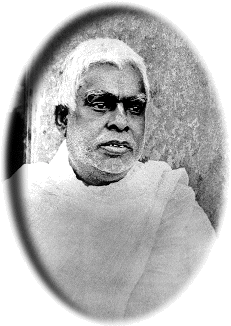 Now he occupied himself in studying the religious books. He deeply read the works of Mr. Channing and the controversy between Raja Ram Mohan and the Christian Missionaries. He read the koran. He deeply read the works of Theodore Parker, Newman and others. He frankly admits in his biography that he preferred Christianity to Brahmoism on account of clear admission regarding the transcendence of God head and spiritual function. He was always in favour of one God, never liked the Brahma system of worship. But he never ceased his discussion with Dwijendra Nath. He remarked in his biography that "if I had any friend of my heart among mankind, it was Dwijendra Nath". This was the time of Sepoy Mutiny. He discussed it with the editor of Tattava Bodhini and the great Pandit Baneswar Tarkalankar.
Now he occupied himself in studying the religious books. He deeply read the works of Mr. Channing and the controversy between Raja Ram Mohan and the Christian Missionaries. He read the koran. He deeply read the works of Theodore Parker, Newman and others. He frankly admits in his biography that he preferred Christianity to Brahmoism on account of clear admission regarding the transcendence of God head and spiritual function. He was always in favour of one God, never liked the Brahma system of worship. But he never ceased his discussion with Dwijendra Nath. He remarked in his biography that "if I had any friend of my heart among mankind, it was Dwijendra Nath". This was the time of Sepoy Mutiny. He discussed it with the editor of Tattava Bodhini and the great Pandit Baneswar Tarkalankar.
He went to Chutimangalpur in the district of Bhadruk in Orissa where his grandmother and grandfather were living. They inherited some landed property there from Raja Rajballav. Pandit Iswar Chandra Vidyasagar was his great pattem. In 1860, he wrote his "Maths of Orissa" in English. His next work was his Bijangram written in Bengali blank verse. This is the first work ever written and published in blank verse in the history of Bengali language and literature. It is not correct to say that Michael Madhusudan Dutta was the inventor of the blank verse in Bengali.
First he started his life as a school teacher and soon he entered into the executive services and became the Deputy Magistrate and Deputy Collector at Chapra in 1866, at the age of 28. Here he read "Urdu" and "Persia" under a Munsi. He wrote his Valedi Registry in Urdu. In March 1868, he was appointed Deputy Magistrate at Dinajpur.
Here in Dinajpur he came in contact with Vaishnavism, which was prevalent there under the patronage of Raya Saheb Kamala Lochana, the great Zamindar of Dinajpur, who was the descendant of Ramananda Vasu, an ardent follower of Sri Chaitanya. He made the acquaintance with many Vaishnavas. Here he secured the printed Chaitanya Charitamrita, and the Bengali translation of the Bhagavata; also copy of Bhaktamala. On first reading the Chaitanya Charita, he fommed a high opinion of Sri Chaitanya and began to regard Sri Chaitanya as God and was seriously engaged in this study of Sri Chaitanya's religion in the company of the Vaishnavas at Dinajpur. Now Kedaranath became an out and out Vaishnava. He deeply studied the literature of Brahmoism, Christianity and Islam. He made a comparative study of Vaishnavism with reference to other religions, but he found the perfect consummation of his own taught in Vaishnavism. He was next transferred to Champran for a few months, and later posted at Puri. Now his devotion to Sri Chaitanya grew very intense.
He came to Puri with his family, taking with him his two very favourate books, Sri Chaitanya Charita and the Bhagavata. He was happy for having been posted at Puri where his God, Sri Chaitanya had spent so many years. His stay at Puri gave a great impetus to his religious feeling for Vaishnavism. He appointed one Gopinatha Pandita whom he studied the whole of the Bhagavata with its commentary by Sridhara Swami. Two other Pandits named Hariharadasa and Markandeya Mahapatra who studied the Nyaya and Vedanta in NavadvIpa and Benares began to study the Bhagavatam along with him Kedaranath learned Sanskrit grammar and literature under the great Isvara Chandra Vidyasagara, Dwijendra Nath Tagore and others during his school days in Calcutta. He continued his study of Sanskrit all through. Having finished the Bhagavata he studied Jiva Goswami's Sadsandarbha, Baladeva Vidyabhusana's Govinda Bhasya, Prameyaratnavali, Rupa's Bhaktirasamrita Sindhu and Hari Bhaktikalpalatika, and others which he could secure from the library of the Raja of Puri. Now he mastered the philosophy of Gaudiya Vaishnavism. Here he finished his Sanskrit book "Datta Kaustubha" and began his famous Sanskrit work 'Sri Krishna Samhita'. The latter is philosophical, on Gaudiya Vaishnava philosophy.
Besides these many other works were composed during this time. Now he started a class for teaching the Bhagavata. He formed a society styled the Bhagavata Samsad, in the Jagannatha Vallabha Garden, for the study and culture of the Bhagavata All the principle Vaishnava leaders were impressed with his reaming and religious fervour. He was in charge of Jagannatha temple on behalf of the Govemment. He started another society called Vidvat Sabha for promoting the study of Bhakti literature. He came in contact with a very great Vaishnava saint named Svarupadasa. He was a great ascetic and wholly devoted to God. Kedaranath had high regard for him. Everyday Kedaranath used to hold a conference at the Jagannatha temple and discussed various doctrinal aspects of Vaishnavism. He stayed at Puri for five years.
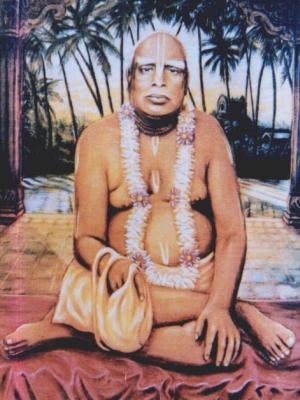 From Puri he was posted at different places in Bengal and he visited principal places of pilgrimages of the Vaishnavas. He was stationed in the Narail in the District of Jessore in 1878. He became very popular in the subdivision as a great Vaishnava Magistrate. Many Kirtana singers used to come to him entertain him with their songs. Here he published his Krishna Samhita in 1889 and Kalyan Kalpataru, a collection of his own Pada poems, in 1880. Krishna Samhita was highly praised throughout the country. Sir Reinhold Rest of the India Office, London, has written the following remarks on it "By presenting Krishna's character and His worship in a more sublime and transcendent light than has hithert o been the custom to regard him in, you have rendered an essential service to your coreligionists, and no one would have taken more delight in your work than my departed friend Goldstucker, the sincerest and most zealous advocate the Hindus ever had in Europe, " Dated 16th April 1880.
From Puri he was posted at different places in Bengal and he visited principal places of pilgrimages of the Vaishnavas. He was stationed in the Narail in the District of Jessore in 1878. He became very popular in the subdivision as a great Vaishnava Magistrate. Many Kirtana singers used to come to him entertain him with their songs. Here he published his Krishna Samhita in 1889 and Kalyan Kalpataru, a collection of his own Pada poems, in 1880. Krishna Samhita was highly praised throughout the country. Sir Reinhold Rest of the India Office, London, has written the following remarks on it "By presenting Krishna's character and His worship in a more sublime and transcendent light than has hithert o been the custom to regard him in, you have rendered an essential service to your coreligionists, and no one would have taken more delight in your work than my departed friend Goldstucker, the sincerest and most zealous advocate the Hindus ever had in Europe, " Dated 16th April 1880.
Here at Narail he was initiated by Sri Bipin Vihari Goswami. He adopted all Vaishnava practices in its strictest fomm. Now he resolved to interest the educated people in Gaudiya Vaishnavism. With this purpose in view he started a Bengali monthly called Sajjana Tosani dealing with Vaishnava religion. It was the first Vaishnava newspaper. After stay for three years at Narail for a period of three years he made a pilgrimage to Allahabad, Ayodhya, Benares, Vrindavana and so on. At Vrindabana he met the famous Jaganathadasa Babaji, the head of the Gaudiya Vaishnavas. He subsequently became the religious guide of Kedaranatha and helped him in his misionary activities. The late Sarada Charana Mitter who afterwards became a judge of the Calcutta High Court, brought for him a good collection of the manuscripts of Vaishnava books of which Viswanath Chakravarti's commentaries on the Bhagavata and the Gita were particularly mentionable.
Now he decided to take up the preaching of the Gaudiya doctrine in earnest. He founded a printing press known as Vaishnava Depository. Philosophical books of the Vaishnavas were in Sanskrit. He undertook to place before the educated public the system of Gaudlya Vaishnava philosophy in a simple and popular form. He possessed a style that was easy, invigorating, cheerful lucid and uniform, and enriched with fresh store house of Sanskrit and adopted to Bengali in a natural way. The Bengali language in his hands has thus been improved as a very powerful vehicle for the conveyance of the sublimes" and most highly philosophical truths of religion, with an ease and precision that makes his works highly interesting and at the same time perfectly intelligible to the most ordinary reader.
His famous work 'Sri Chaitanya Siksamrita' evidences his perfect assimilation of the Gaudiya Vaishnava philosophy in relation to others systems of a different school. It is one of the most important books, which established his name as an authority on the Gaudiya Philosophy. Subsequently he also published the Gita with its commentary by Viswanatha Chakravarty and his own Bengali commentary called Rasikaranjana and another important book Gunaraja Khan's ' Krishna Vijaya.' Many educated men both Brahmanas and Kayasthas became his disciples. When he was commanded by his God in a dream to render his service to Navadvipa, the Birth place of Sri Chaitanya, which had fallen into oblivion. Kedaranath was transferred to Krishnagar as a Sub Divisional Magistrate. He came to Krishnagar with joyous hope to seek the place where his beloved God, Sri Chaitanya, had been bom. When he was at Puri, he secured Narahari Chakravarti's'Bhaktiratnakara', and Paramananda Dasa's book which greatly helped him in his archaeological investigation.
While at Krishnagar, one night, thinking deeply on the site of birthplace of Chaitanya Mahaprabhu on the roof of his residence in Navadvipa he is said to have seen in a vision a luminous building towards the north east. He was filled with wonder. The next moming he asked for the particulars of the place from which the vision had appeared to him. He was told that the ruins of the Ballal's palace are to be found there. He went to the place with such topographical accounts old maps and other data, as he could gather for his investigations. On enquiry he leamt from the local people that it was the Birth place of Sri Chaitanya. They pointed out an extensive mound covered with Tulasi plants as the actual site of the house of Sri Chaitanya. They added that they used to point out from generation to generation. It was a blissful moment when he realised that he had at last succeeded in his attempt which had cost him so much anxiety. Thakura Bhakti Vinode then composed his famous Navadvipa Dhama Mahatmya in praise of every place within the circle of Navadvipa. It was published in the same year.
He established 'Sri Navadvipa Dham Pracharini Sabha' 1894 with the Ruling Prince of Tripura as its President and under the auspices of the Sabha Temple was established at the birth site of the Lord at Yogapith and maintained the seva puja and periodical festivals of the Deities Sri Chaitanya Mahaprabhu at Sri Mayapur and developed the place. Now Sri Mayapur has became a town of temples attracting thousands and thousands of pilgrims from different parts of India and abroad. Thakur Bhakti Vinode by his personality, writings and preaching captured the imagination of the educated people of Bengal. He interested the educated section of the society in Vaishnava religion. Thakur Bhakti Vinode was a voluminous writer. He never failed in meeting the demand of educated public for its literature. The Goswamis of Vrindaban conferred on him the title of 'Bhakti Vinode' in recognizing his unprecedented service to the cause of Vaishnavism.
The title of the book 'Jaiva Dharma' indicated that it deals with religion or the essential and natural characteristics of the individual souls. The human beings consist of soul which is pure 'chit' or spirit and a physical body of five elements viz. earth, water, fire, air and ether into which it is dissolved and a subtle body composed of Mana (mind), Buddhi (intellect) and Ahankar (ego). The soul of the beings is part of 'Over Soul', or the absolute, called Bhagavan Jiva soul is neither born nor dead, nor having shall it again cease to be, unborn, unchanging, eternal, this ancient of days is not killed when the body is killed. It is inseparable part and parcel of God. Compare the sun and sun's rays to God and jiva souls. As we cannot think of the sun without the rays nor the rays without the sun, so we cannot think of God without jiva souls or the jiva soul without God. The difference betwen the two is that one is Brihat viz. great, nothing greater nor equal to God while the soul is tiny and atomic. The cloud may intercept and obstruct, the rays when coming to earth but the cloud cannot cover the sun. Maya may intercept, jivas from God, but m aye cannot cover God. It is well established in Vaishnava Philosophy that both God and the individual souls are distinct entities jivas are plural coexisting in the absolute.
In this book the author brings out the relation between God and nature of the spirit of a man, not in abstract but the relation between the two when unfolded or when the individual souls are released from the clutches of rnaya, they are immediately attracted to Bhagavan in pure consciousness coupled with bliss. The relation between the two will continue forever, the liberated individual will continue to maintain its individuality to perform and participate in Leela. In Vaishnavism the indididual is not absorbed but remains distinguished. According to the Advaitavada of Sankaracharya Individuality is Upadhic or conditioned and liberation means the absorption of individuality in absolute consciousness but according to the Vaishnava thought both God and the individual will remain distinct and bound together in Prema or Love. Thakur Bhakti Vinode brings out the relationship between God and individuals to be romantic as opposed to Shankarite mukti putting an end to the individual.
Following the great Gtla this book was started in the form of a dialogue between a Vaishnava who has transcended the Vamashrama and a Sanyasi well versed in all scriptures. The Sanyasi puts question by way of Pariprasna and the Vaishnava gives answers. The questions and answers cover the whole range of Vaishnava doctrine following a process started from Sraddha or just a faith in God to ultimate realisation of objects viz. Prema by which the individuals serve God in blissful coexistence. The author profusely quotes verses and passages from the vast store house of Scripture in support of his narration. The readers of this book will have clear conception of the fundamentals of Gaudiya Vaishnavism, its Philosophy and Upasana.
I can say without any fear of contradiction that each book of Thakur Bhakti Vinode is a thesis for a doctorate. The language of Thakur Bhakti Vinode whether English, Bengali or Sanskrit, is simple, direct and easily intelligible. The treatment of the difficult philosophical problems is that of a master mind. His intention was to represent the Gaudiya Vaishnavism in its real perspective to the public in a way which will be intelligible to them. Each and every word of Thakur Bhakti Vinode is really readable with profit.
To the devotees of Sri Bhagavan the Supreme Lord Thakur Bhakti Vinode was a personal and etemal devotee of Sri Bhagavan, appearing in a human form in obedience to his Lord's happy Will of pumping off the stagnant and insalubrious waters of the channel of pure devotion, casting of the dregs and thus putting a stop to the decay of righteousness and exaltation of unrighteousness, whereby the real devotees are protected and apparent ones disappeared.
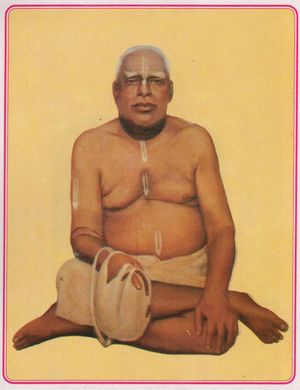 Thakur Bhakti Vinode, was indefatigable in the practice of Suddha Sanatana Dharma taught by Mahaprabhu and was no less strenuously occupied in the work of restoration of the worship of God at holy sites and the establishment of congregational and individual religious life in the country. But at the same time he was aware that his mission also to expound to the whole world the teachings of Sri Mahaprabhu which had been and is still misunderstood by people in this country and elsewhere. He found that the people had practically no knowledge of the monumental works of the associates and the most illustrious followers of Mahaprabhu. The very existence of many of those works was unknown. Those who gave themselves out to be followers of Mahaprabhu mistook ignorance of the scriptures for devotion and selfish enjoyment for love of God. The educated people had very little practice of religion in any form. The mass and expecially women were addicted to Smarta ritualistic practices, the object of which was the attainment of selfish enjoyments. The Pandits were mostly either supporters of such fruitive ceremonies or believers in an abstract form of God devoid of all spiritual pastimes, this latter being the bequest of Godless Buddhism and the teaching of Shankaracharya. Scepticism among the educated classes coupled with the prevalence of Polytheistic or Neutralistic attitudes were prevalent.
Thakur Bhakti Vinode, was indefatigable in the practice of Suddha Sanatana Dharma taught by Mahaprabhu and was no less strenuously occupied in the work of restoration of the worship of God at holy sites and the establishment of congregational and individual religious life in the country. But at the same time he was aware that his mission also to expound to the whole world the teachings of Sri Mahaprabhu which had been and is still misunderstood by people in this country and elsewhere. He found that the people had practically no knowledge of the monumental works of the associates and the most illustrious followers of Mahaprabhu. The very existence of many of those works was unknown. Those who gave themselves out to be followers of Mahaprabhu mistook ignorance of the scriptures for devotion and selfish enjoyment for love of God. The educated people had very little practice of religion in any form. The mass and expecially women were addicted to Smarta ritualistic practices, the object of which was the attainment of selfish enjoyments. The Pandits were mostly either supporters of such fruitive ceremonies or believers in an abstract form of God devoid of all spiritual pastimes, this latter being the bequest of Godless Buddhism and the teaching of Shankaracharya. Scepticism among the educated classes coupled with the prevalence of Polytheistic or Neutralistic attitudes were prevalent.
"Himself practicing the dharma. Lord Sri Chaitanya teaches jiva that if one does not practice dharma himself, he cannot teach it to others." The career of Mahaprabhu embodying the teachings of all the scriptures was the subject that Thakur Bhakti Vinode placed before the people of Bengal in clear and simple language and with a wealth of reaming and depth of spiritual insight that make his numerous works a part and parcel of the scriptures of all countries, explaining in minutes" detail, and in unambiguous language, the only true religion of all jivas. They deserve to rank with the immortal works of Thakur Vrindabandas and of Kaviraj Goswami as Scriptures of the suddha Sanatana Dharma.
With the object of dispelling ignorance of the principles of suddha Sanatana Dharma, Thakur Bhakti Vinode applied himself to publish systematically important authoritative works dealing with the teachings of Mahaprabhu with exhaustive explanatory notes in Bengali. A few of these publications may be mentioned here: In 1880 he published Sri Krishna Samhita in Sanskrit with the most learned introductions, Appendix and Translation in Bengali. In 1886 he published the Gita with commentaries of Srila Viswanath Chakravarti Thakur and his own annotation 'Rasik Ranjan' in Bengali, in 1891. Srimad Bhagavat Gita with commentaries of Srila Baladeva Vidyabhusan and his Bengali annotation (Vidvat Ranjan). In 1894, Ishopanishad with his Bengali annotation ( Vidvat Ranjan). In 1895 Sri Chaitanya Charitamrita with his 'Amritapravaha Bhashya' in Bengali. In 1897 Sri Brahma Samhita with his Bengali annotation in 'Prakashani'. In 1898, Sri Krishna Karnamrita with his Bengali annotation. In the same year Sri Upadeshamritam by Sri Rupa Goswami with his Bengali annotation "Piyushavarshini Vritti" and Sri Brihat Bhagavatamritam by Sri Sanatana Goswami with his annotations in Sanskrit and Bengali. In 1901, Sri Bhagavatarka marichimala. In 1904, edited Satkriyasardipika, a Vaishnava Smriti by Srila Gopal Bhatta Goswami.
This was supplemented by the publication of original works in Bengali prose and verse. Some of the most important of them are in 1881, Kalyan Kalpataru; in 1886 Sri Chaitanya Sikshamrita, 1890 Sri Navadvipadhama Mahatmya, in 1892 Sri Mahaprabhu and His Siksha; 1893 Sri Saranagati, Sokashatan, Jaiva dharma, in 1900, Sri Harinama Chintamani in 1902, Bhajan Rahasya. The Bengali religious monthly 'The Sajjana Toshani' was started by him in 1879 and he continued to edit the paper for seventeen years when it was made over to Sri Saraswati Thakur who published thereafter. Besides these, Thakur Bhakti Vinode also wrote a number of works in english, Sanskrit, Persian, Urdu and Hindi.
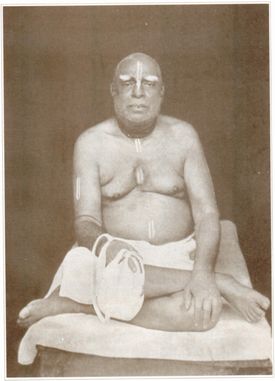 Thakur Bhakti Vinode possessed a style that is easy, invigorating, cheerful, lucid and uniform and enriched with the fresh wealth of an ample vocabulary called from the inexhaustible store house of Sanskrit and adapted into Bengali language. In the hands of Thakur Bhakti Vinode the language has thus been transformed into a powerful vehicle for the conveyance of the sublimes" and the most highly philosophical truths of religion with an ease and precision that makes his works highly interesting and at the same time perfectly intelligible to even the most ordinary reader, including children.
Thakur Bhakti Vinode possessed a style that is easy, invigorating, cheerful, lucid and uniform and enriched with the fresh wealth of an ample vocabulary called from the inexhaustible store house of Sanskrit and adapted into Bengali language. In the hands of Thakur Bhakti Vinode the language has thus been transformed into a powerful vehicle for the conveyance of the sublimes" and the most highly philosophical truths of religion with an ease and precision that makes his works highly interesting and at the same time perfectly intelligible to even the most ordinary reader, including children.
Thakur Bhakti Vinode is the pioneer of the suddha Bhakti Movement that is at present sweeping over the county. In his numerous literary works he has supplied the golden key that unlocks the region of etemal Bliss to all jivas. The teachings of Mahaprabhu give us the real meaning of the Scriptures, reconciling all differences of opinion that trouble the world. In Mahaprabhu centers the only hope of the future and present of all jivas. But the teachings of Mahaprabhu were not grasped by people of this country and their real significance passed long ago clean out of the memory of the nation. Thakur Bhakti Vinode has made the eternal religion live again in his pages. Without his help nobody at the present day can understand the teachings of Mahaprabhu or the Absolute Truth. With his help the absolute Truth can be easily understood. The absolute Truth alone can reconcile the otherwise erreconcilable differences and discords of this world. It is universally recognised that the Truth is bound to prevail over untruth in the long run. But even the Truth can only be grasped by those whose minds are perfectly free and prepared to receive it when it actually makes its appearance. But most of us are not ready to welcome the Truth for its own sake. Thakur Bhakti Vinode tells us that a perfectly pure mind alone is fit to receive the Truth. Perfect purity is not to be found in the world. It belongs to Divinity alone and is imparted by divine Grace; and God often sends His own beloved to convey His Grace to fallen jivas if only they submit to receive it from him.
In this present work there is neither the scribbling of an imaginative pen nor the produce of the hack writer's den, but the actual display of Thakur's eternal and constant devotion. His own doings and sayings are but embodiments of these precepts. Chaitanya Mahaprabhu is his riches, Chaitanya Mahaprabhu is his property his all in all. This is a dictum of the comparative study of all the thoughts of worldreligion and in which we find an end to all religious conflicts and it culminates at the unparalleled and unprecedented Transcendental devotionalism of Sri Chaitanya Mahaprabhu. He has proved wonderfully and brilliantly that attachment in the garb of perfect indifference, as is characteristic in the monkeys, is detrimental to pure devotion and that this world cannot obstruct the flow, and cloud the display of devotion in him who has the good luck of gaining the graceful favours of a Sad-guru and surrendering himself fully and sincerely to him. His boldness, strictness and stemness in accepting and establishing real devotion and dispelling the apparent one are rarely found.
Thakur was visible in this world from 1838 to 1914. In this span of seeming birth and death all his activities were directed towards removing the etemal distress of the human kind the etemal oblivion of the real blissful condition of the soul and its consequent stuporous identity with the body and the mind and weeding out the field of devotion, as a result of which the sham devotees are being brought to book, and the real places of the birth and earlier pastimes of Sri Chaitanya Mahaprabhu have been brought to light. It was Thakur Bhakti Vinode who located the holy birth site of Sri Chaitanya Mahaprabhu at Sri Mayapur.
B.V. TIRTHA
I think it necessary at this point to shed some light on a special feature of the author’s life. Although he was a pre-eminent scholar of Western thought, he was completely free from Western influences. Western educators say, “Don’t follow me; follow my words.” In other words, “Don’t do as I do; do as I say.” The life of Srila Bhaktivinoda Thakura refutes this principle, for he personally applied and demonstrated all the instructions of his books in his own life. Therefore, his instructions and manner of bhajana are known as ‘Bhaktivinoda dhara (the line of Bhaktivinoda).’ There is not a single instruction in his books that he did not personally follow. There is no disparity between his writings and his life, between his actions and his words. They are one in all respects. It is natural for readers to be curious to learn about a great personality who possesses such extraordinary character.
Modern readers in particular, who seek to know about any subject, cannot have faith in an author’s writings without being acquainted with the author himself. Therefore, I am submitting a few words about Srila Bhaktivinoda Thakura. When it comes to discussing the life of great self-realized personalities who are transcendental to mortal existence, it would be a mistake to consider their birth, life span, and departure from the vision of this world to be similar to that of mere mortals. They are beyond birth and death, they are situated in eternal existence, and their coming and going from this world is strictly a matter of their own appearance and disappearance.
Srila Bhaktivinoda Thakura appeared on September 2, 1838, and thus illuminated the sky of Gaudiya Vaisnavism. He took birth in a high-class family in a village named Vira-nagara, which is located within the Nadiya district of West Bengal, not far from Sridhama-Mayapura, the appearance place of Sri Gauranga. He disappeared from this world on June 23, 1914, in the city of Calcutta, at which time he entered the midday pastimes of Sri Sri Gandharvika-Giridhari (Radha-Krsna), who are the supreme objects of worship for the Gaudiya Vaisnavas. In his brief lifespan of seventy-six years, he instructed the world by personally carrying out the duties of the four stages of spiritual life: brahmacarya (celibate student-life), grhastha (religious householder-life), vanaprastha (withdrawal from worldly duties), and sannyasa (formal renunciation). He first underwent brahmacarya and obtained various elevated instructions. After that, he entered grhastha life and set an ideal example of how to maintain family members through honest and noble means. All householders should follow this example.
During his householder life, he travelled all over India as a highly placed officer in the administration and justice department of the British government of India. By his exacting discrimination and expert administrative skills, this great personality managed to regulate and bring to order even those places that were infamous as lawless states. In the midst of family duties, he astonished all his contemporaries by the religious ideal he displayed. Although engaged in pressing responsibilities, he wrote many books in different languages.
If the reader studies the list of his books, he can clearly deduce Bhaktivinoda's incredible creative power. After retiring from his government responsibilities, Srila Bhaktivinoda Thakura adopted the stage of vanaprastha and intensified his spiritual practice. At that time, he established an asrama at Surabhi-kunja in Godrumadvipa, one of the nine districts of Navadvipa. He remained there and performed bhajana for a considerable time. Later he accepted the life of an ascetic, and stayed at Svananda-sukhada-kunja, which was nearby. While residing there, he established the appearance place of Sri Caitanya Mahaprabhu and many other places of gaura-lila. In this, he followed the example of Mahaprabhu and His followers, the Six Gosvamis, who had discovered the birthplace and other pastime places of Sri Krsna.
If Srila Thakura Bhaktivinoda had not appeared in this world, the pastime places and instructions of Sri Gauranga Mahaprabhu would have disappeared from the world. The entire world of Gaudiya Vaisnavas will therefore remain indebted to him forever. It is for this reason that he has been awarded the highest honor in the Vaisnava community by being addressed as the Seventh Gosvami.
![[Bhaktivedanta Memorial Library Logo]](../grfx/bml_logo.gif)